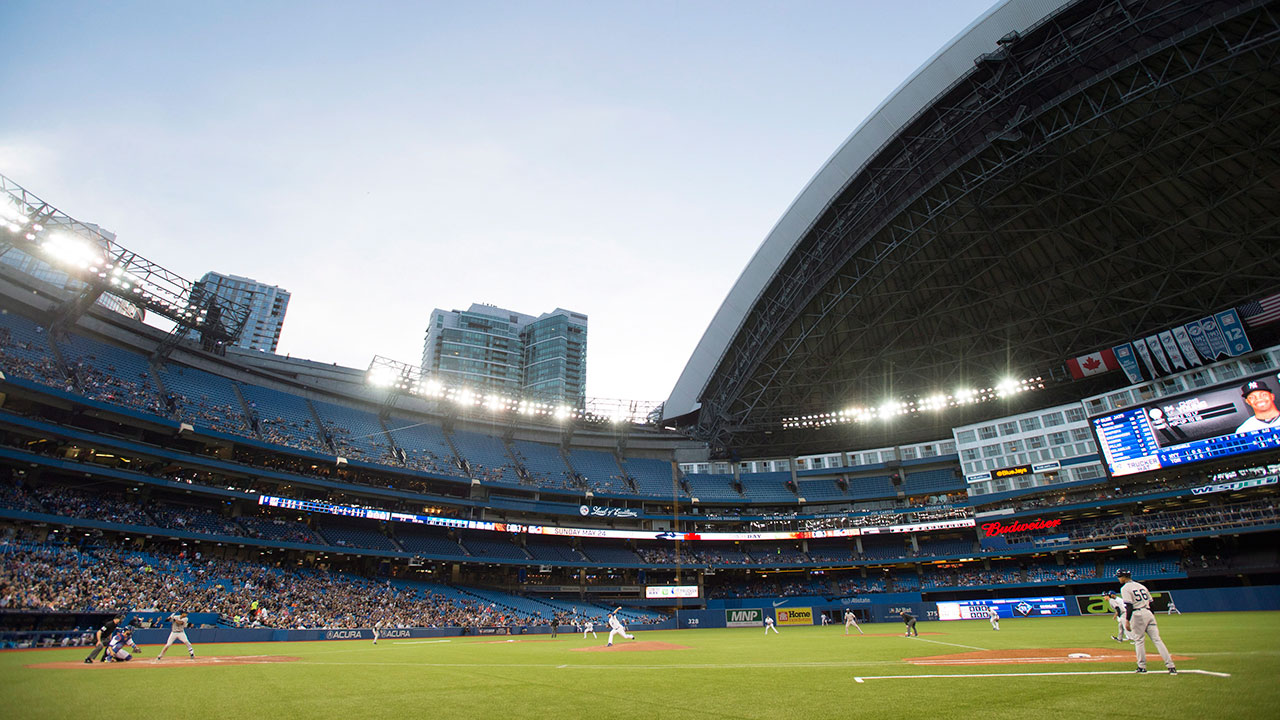When new Toronto Blue Jays president Mark Shapiro off-handedly dismissed the idea of installing natural grass as a top priority in any forthcoming Rogers Centre retrofit, I can’t say that it seemed to me like a particularly Grinch-like proclamation. If anything, it seemed like the first forthright statement on the matter in years.
When asked about the statement on Prime Time Sports this week, Shapiro added plenty of context, buttressing the essence of what he said with just enough billowy hope to make Dumb and Dumber’s Lloyd Christmas believes there’s a chance of Blue Jays sliding on an organic surface.
For the rest of us, we shouldn’t get our hopes up. The notion that there was going to be a grass field at Rogers Centre was probably much more remote than we’ve been led to believe in recent years. Not that this should lead us into despair.
It’s hard to argue against natural grass as the preferred surface on which baseball should be played. From the point of view of aesthetics, a grass field looks and even feels better. Moreover, the retro fakery of a plastic field can feel like an embarrassment to Jays fans, who resent to be singled out for a ballpark that’s as out of fashion as macramé jewelry or acid-wash jeans.
Natural grass would be easier on the eyes and ego, but the path to completing such a task would include such substantial investment in (and under) the stadium that it begs the question of what the actual cost-benefit of such a potentially massive undertaking would be. Figures have been floated of between $200 million and $400 million, and one can imagine if that’s a range, the top-end outlier scenario could be downright frightening.
The engineering feats that would be a prerequisite in order to install grass, including the new requirements for air circulation and something resembling sunlight, are considerable. In the end, you could invest tens or hundreds of millions of dollars into such a project and run the risk of damaging the structural integrity of the building or failing outright to sustain a reasonable field.
Moreover, some solutions beget many problems. You might not remember the dead grass at Houston’s Astrodome, but you might remember the sideshow of fielders attempting to find fly balls lost in the roof’s skylights, which were designed to let in natural light.
Speaking of the roof, ensuring its viability in the decades to come surely falls on the “must-have” list of renovations, where grass certainly is a “nice-to-have”. If the one-of-a-kind dome were to seize up – regardless of whether it is open or shut when it did so – it would cause much more consternation than the playing surface.
This is the crux of Shapiro’s challenge in addressing the state of the stadium as it soon approaches three decades in use: He needs to balance what improves the feel of the ballpark for the fan with the needed infrastructure maintenance to ensure that it doesn’t spiral into embarrassing obsolescence. (See: Oakland Coliseum, for one example.)
Strange as it might sound to some, there are fans who would be very happy to trade in a far-flung grass field flight of fancy for a more comfortable seat – with a cup holder, please.
Or more to the point: They’d rather see that money invested in players rather than playing surfaces.
And as for a new stadium to replace the current one, consider that the then SkyDome cost $570 million to build, which translates to $970 million in 2016 dollars. You’d need upwards of a billion dollars (with a George Thorogood-esque capital buh-buh-buh ‘B’) to start anew, and would be unlikely to find a better location than the one where Rogers Centre currently sits.
The gripes about the current surface – both in Toronto and from around baseball – seem entrenched in old perceptions of the turf, based on the former pool table felt surface, which was admittedly abhorrent and scary. If not that, then certainly the pastiche of makeshift surfaces that have been pulled up and thrown back down in the Rogers Centre over the past decade, which were functional, though certainly not lovable.
But the latest, state-of-the-art surface that was installed before the 2015 season looked better on TV or in person than any previous iteration, and even scored glowing reviews from the 2015 AL MVP.
This coming season also represents the first year in which the Jays are not sharing the playing area with football. A more permanent installation which is not constantly flattened or rolled up will undoubtedly remain cushier for a longer period, and will reportedly allow for a full dirt infield cut out to be installed over the winter. They might yet make the old hangar feel like a ballpark.
(Though, am I wrong in asking if the improvement on aesthetics and possibly players’ bodies of that cut out would be out-weighed by the change in hops and bounces the defence will need to deal with?)
And if all else fails, the cost of replacing the turf installation as often as every year or two would likely never catch up to the cost of reworking the whole structure in order to chase the fantastical notion that the previous regime floated out annually at the State of the Franchise, though seldom with any specifics.
There’s an old Hollywood adage that says “put the money on the screen.” The point being that you should make sure that you were spending your money on something that’s actually going to draw in the paying customer. As much as a lawn would be lovely as background, the real show is with the players that stride upon it. And if there’s money to be spent, investing in talent is the better way to make the team compelling.


